Architecture on the Road
ANDONG HAHOE - THE MOST TRADITIONAL FOLK VILLAGE IN SOUTH KOREA
The folk village of Hahoe (안동하회마을), near the city of Andong, is a traditional Korean village from the Joseon Dynasty (1392-1910), and it is considered the most representative, historic clan-based village in South Korea.
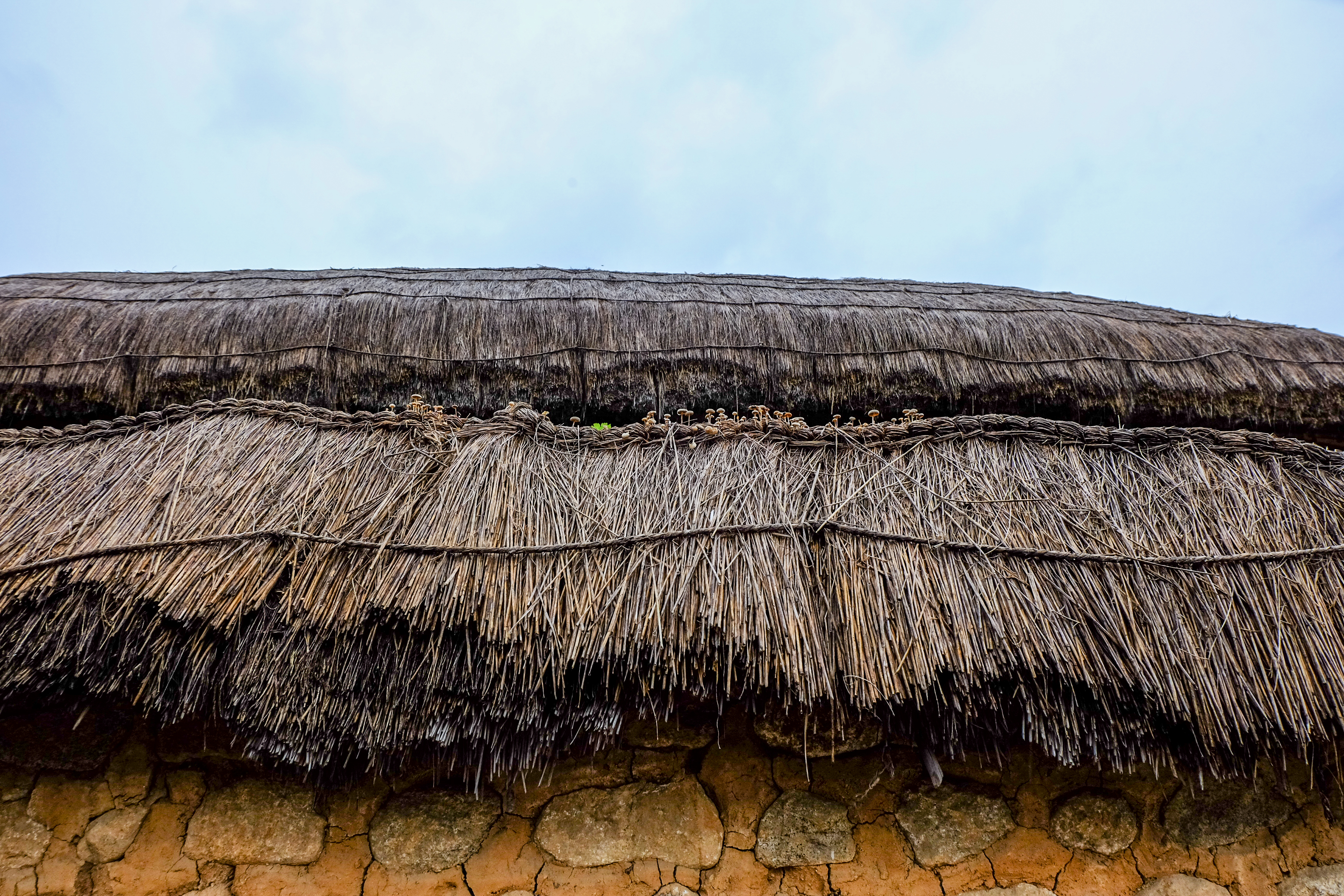
Hahoe means “village surrounded by water,” because of its location in a bend of the Nakdong River.
The village is located at the foothills of Hwasan Mountain, sheltered by the Buyongdae Cliff, which offers beautiful panoramic views. It can be reached by taking a boat to cross the river.
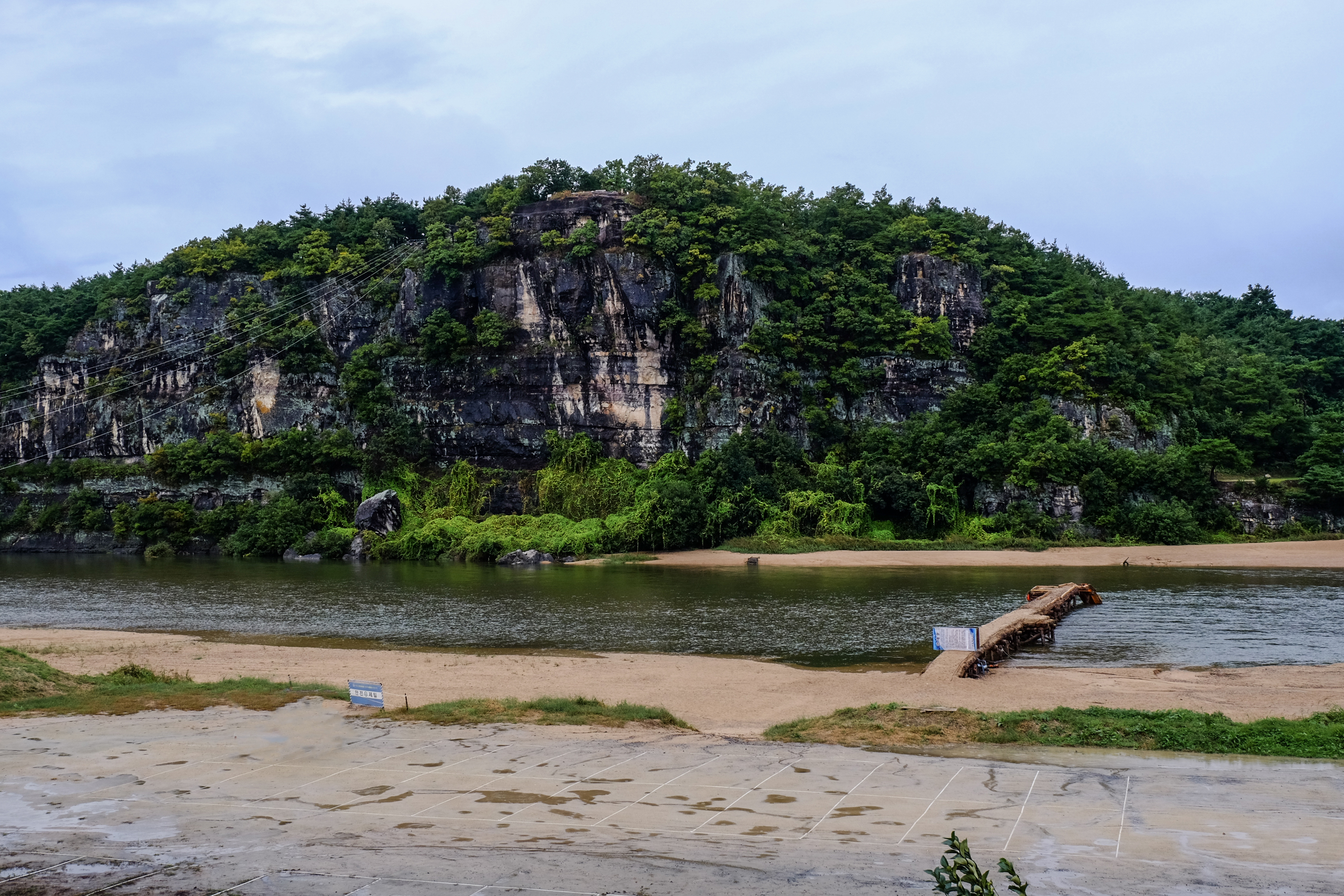
The village was founded around the 15th century by the Ryu family clan, and continued to expand to its present size into the 19th century.
One of its most distinctive characteristics is its architecture, reflective of the Joseon Dynasty which was greatly influenced by the Confucian values of morality and hierarchical society.
In Andong Hahoe, it is in fact possible to admire several Joseon traditional, aristocratic residences, together with some simpler thatched-roof servant houses. The majority of them are still inhabited and really well preserved.
The upper class used to live together with the lower class, making the village an original living museum of vernacular, South Korean architecture.

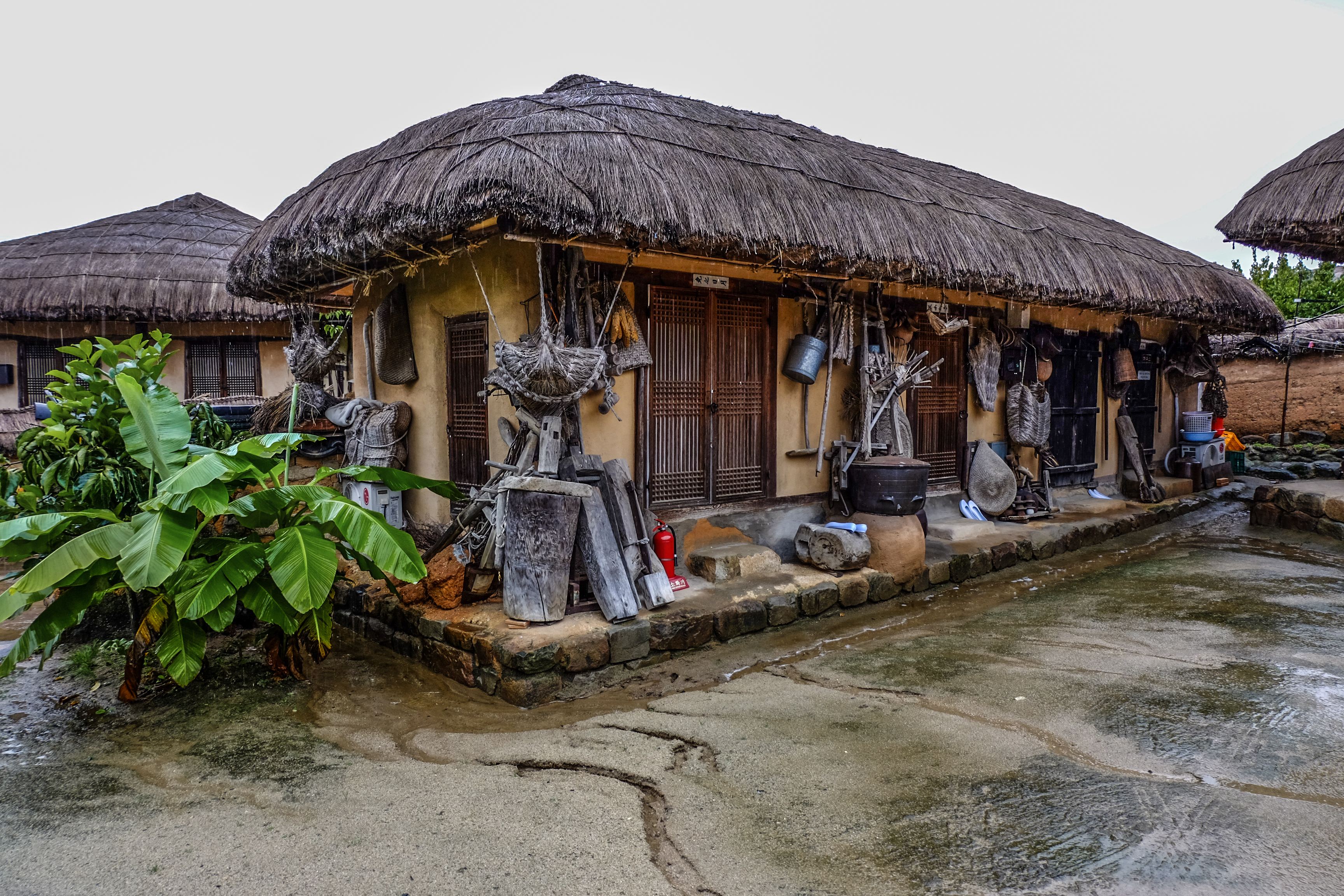
Another distinguishing feature of this village is the literal application of Pungsu (the Korean geomancy) to its layout and location.
Because of its intangible, cultural value, Hahoe village, together with Yangdong village (located close to Gyeongju), were listed as UNESCO World Heritage Site in 2010.

PUNGSU: SOUTH KOREAN GEOMANCY
An important feature of Hahoe is its location: the village lies along a river bend, sheltered by cliffs and mountains to the north and south.
Geomancy is indeed an important aspect of South Korean traditional Architecture, which took its foundations from Chinese Geomancy, known as Fengshui.
In Korean, this practice is called Pungsu-jiri-seol, which studies the “Theory or principles of Wind, Water, and Earth”.
Similarly to Chinese Fengshui, the Pungsu studies and evaluates topography according to their favorable features, which can be related to human fortune, health, and wealth.
The most important focus of Korean geomancy though, is the harmony between man and nature, emphasizing the positive influence of the elements (such as mountains or water) on the good fortune and prosperity of the whole family/clan/community/nation, instead of a single person.
In particular, sites on the slope of a mountain are considered the most auspicious because this is where the energies of Heaven and Earth are believed to converge, favoring the physical and mental health of those that live or visit these sites. These sites are called hyeol (this is one of the reasons why many of the most prestigious South Korean temples are placed at the foot of a mountain).
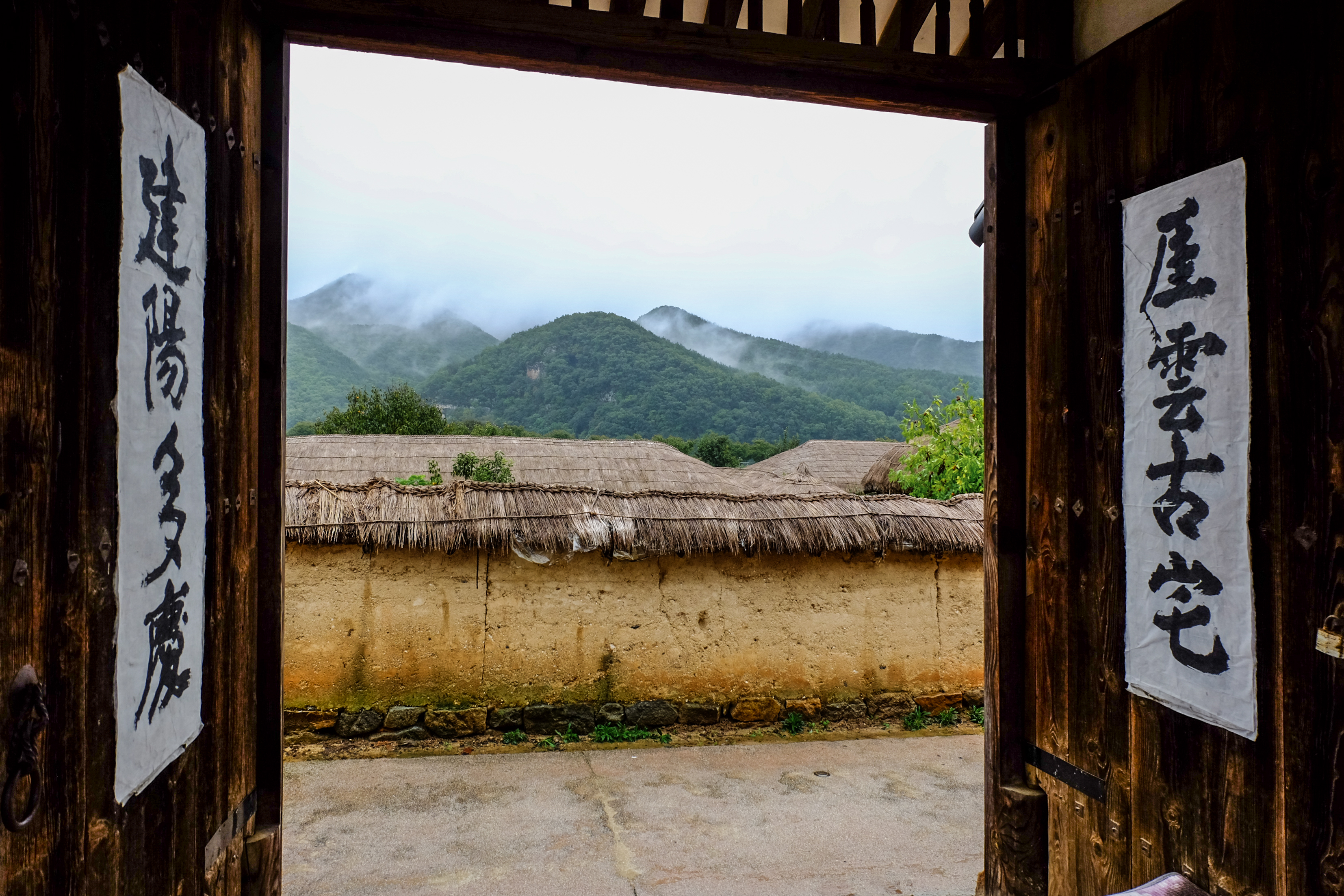
ELEMENTS OF TRADITIONAL KOREAN ARCHITECTURE
The harmony between buildings and nature is one of the main characteristic of South Korean traditional architecture. As already mentioned, a correct positioning in a favorable land is a very important starting point for family houses, villages, and especially temples.
The most favorable places are the ones which provide the elements of the mountain (earth) and the water. The site should be sheltered by a mountain at the back, and open to a wide plain with flowing water, allowing the favorable energy (qi) to flow through the buildings.
The architecture never tries to compete with the surrounding natural beauty, but instead it attempts to respectfully merge and harmonize with the surrounding landscape.
A beautiful view is also a very important consideration while choosing a plot: this is why sometimes entire villages are built facing a specific, ‘more pleasant’ direction.
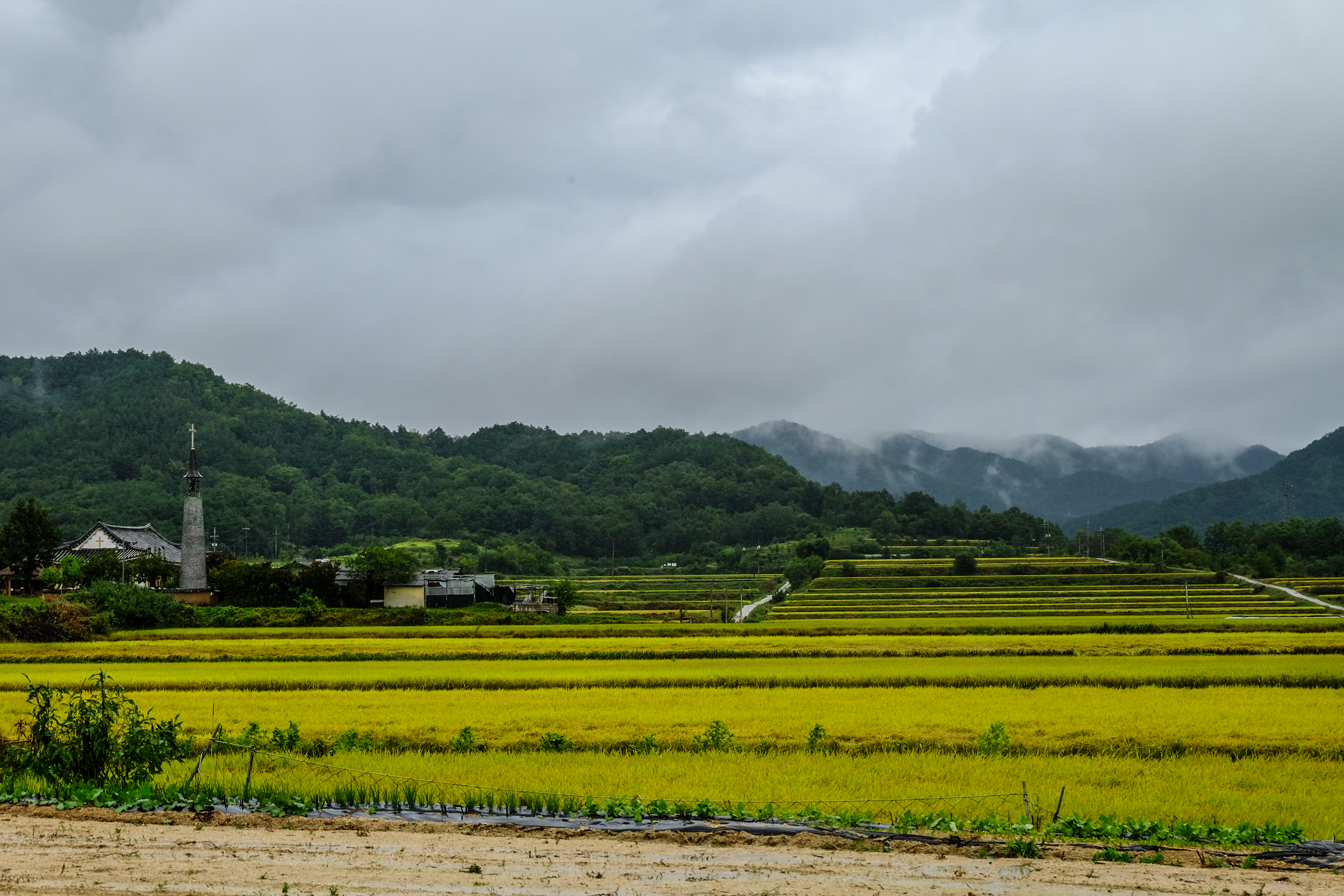
All of what I just mentioned can be recognized in Andong Hahoe village. Its position at the foot of a mountain, the Nakdong River flowing like a horse-shoe around the village, and the idyllic view that can be enjoyed in the surrounding area, make Hahoe the perfect example of a traditional village following the geomantic principles of pungsu.
TRADITIONAL SOUTH KOREAN HOUSES
The traditional house typology of South Korean is the hanok, which can vary in dimension according to the wealth and status of the owner.
The Hanok houses usually develop around open spaces, which are often prioritized over interior spaces. Courtyards and gates are the main connection between the pavilions that form the different parts of the house. These pavilions, constituting the rooms, are usually relatively simple and small in size.
The main material used in hanok houses are wood, clay, stone, and paper (all natural).

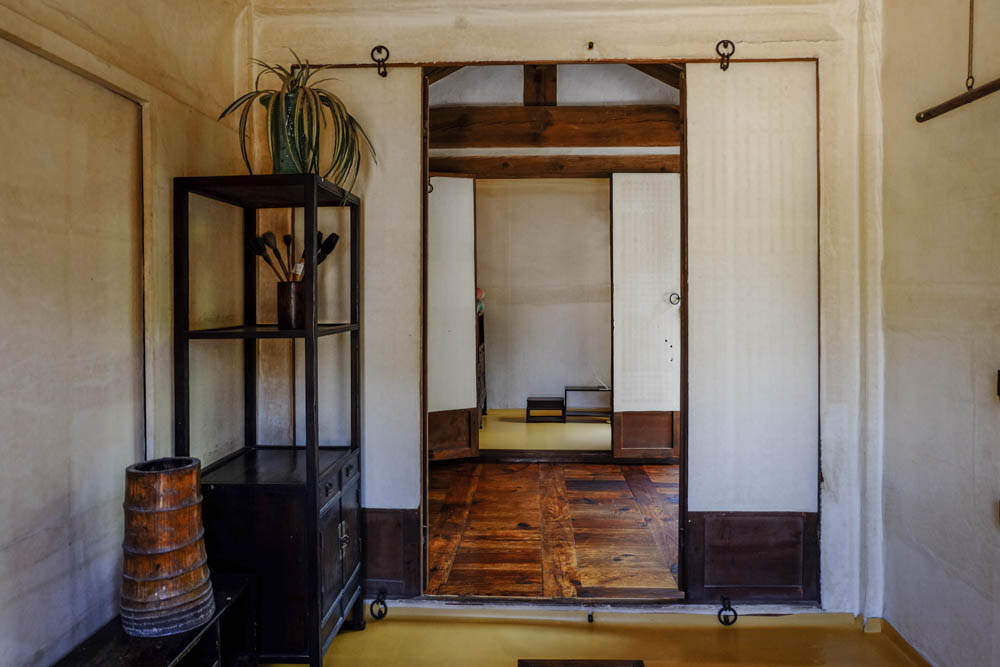
For traditional South Korean homes, men and women used to live and sleep in separate parts of the house, in accordance to Confucian principles.
Aristocratic homes were divided into distinct inner (female) and outer (male) sections. Smaller hanok were often just divided into two separate rooms.
In the central part of the house, or on an elevated platform, there is typically an ancestral hall or shrine dedicated to the ancestors of the family.
For lower class properties, the common houses were simple thatched roof cottages with the external walls covered in rammed hearth. The interior could be made up of just a couple rooms.
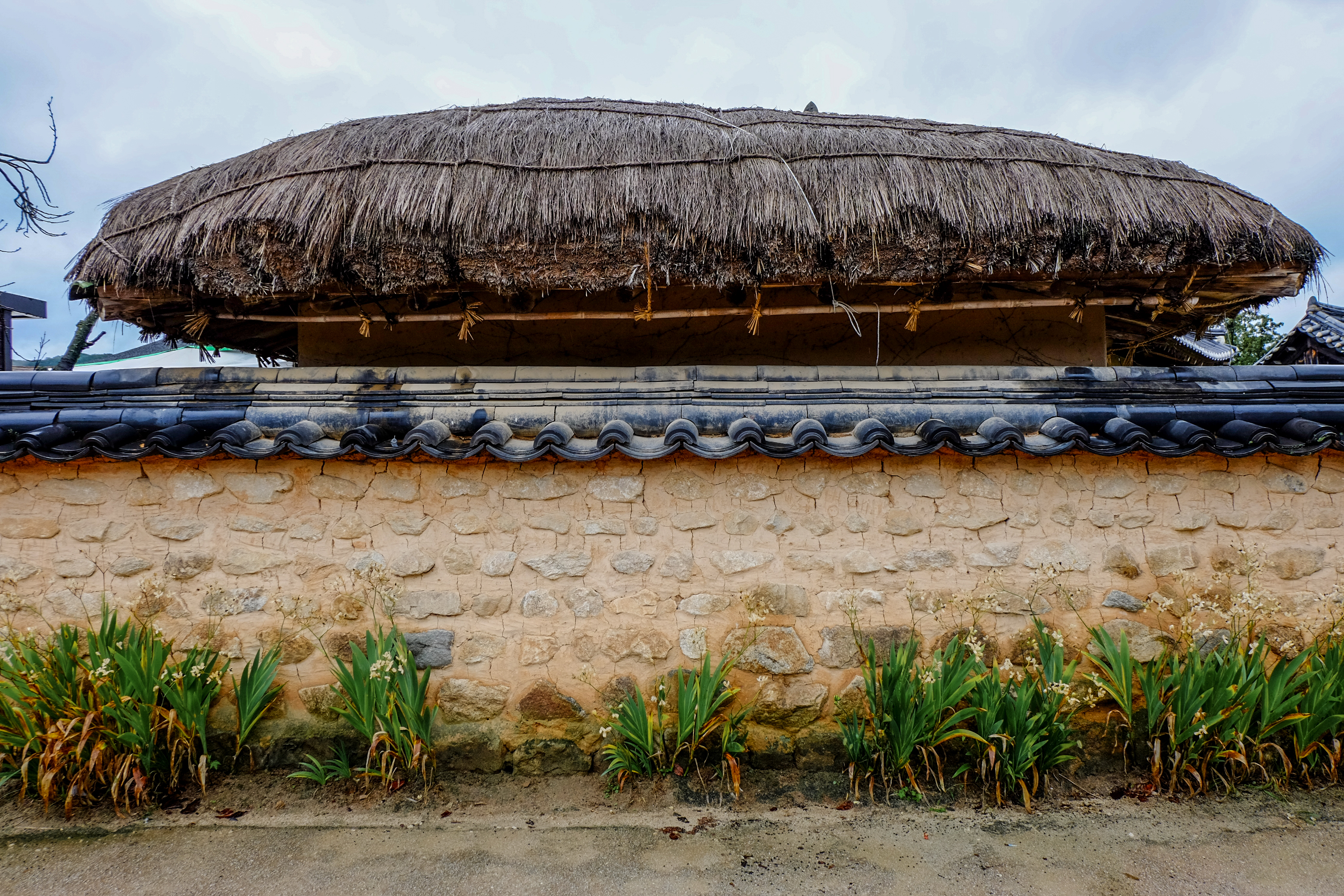
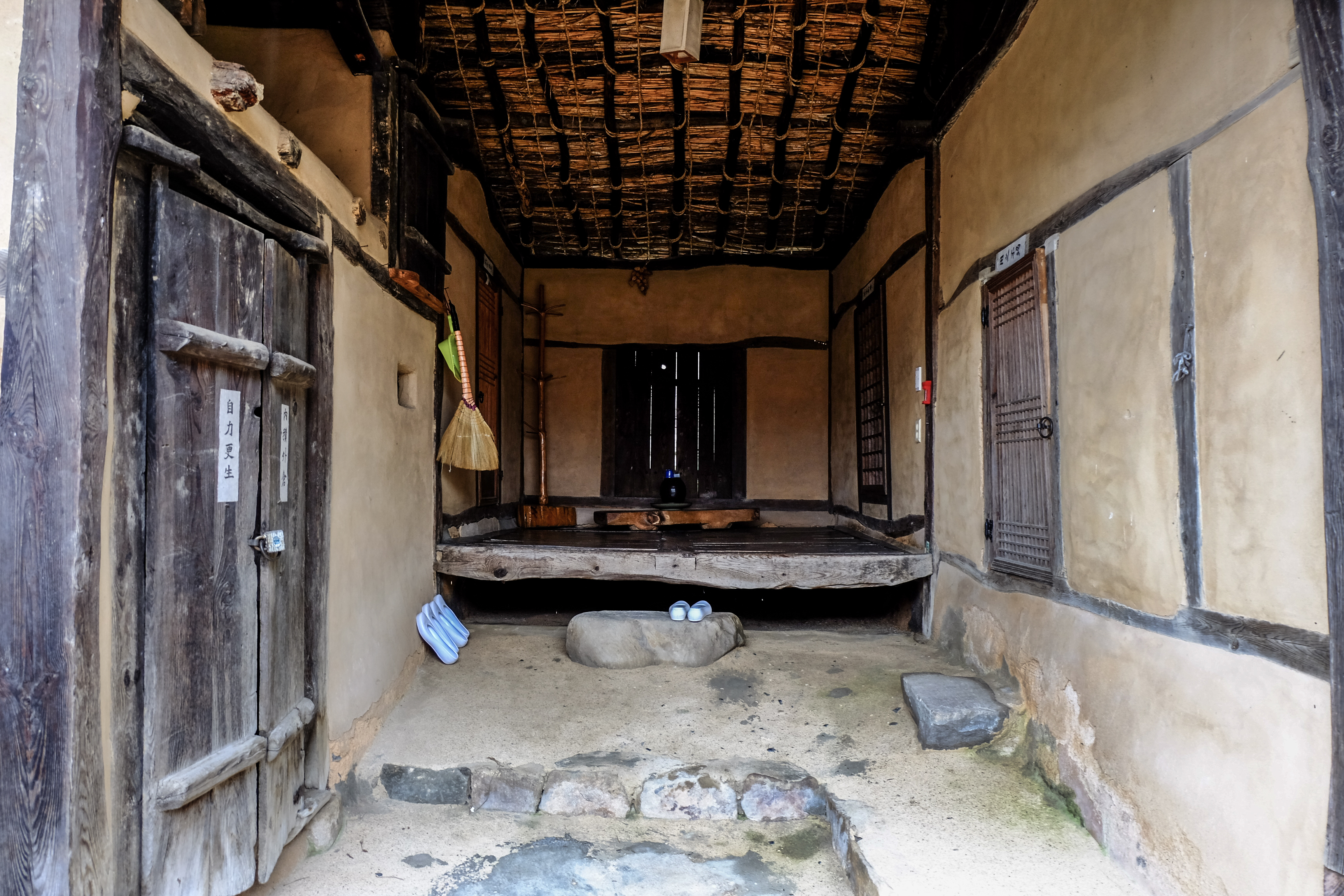
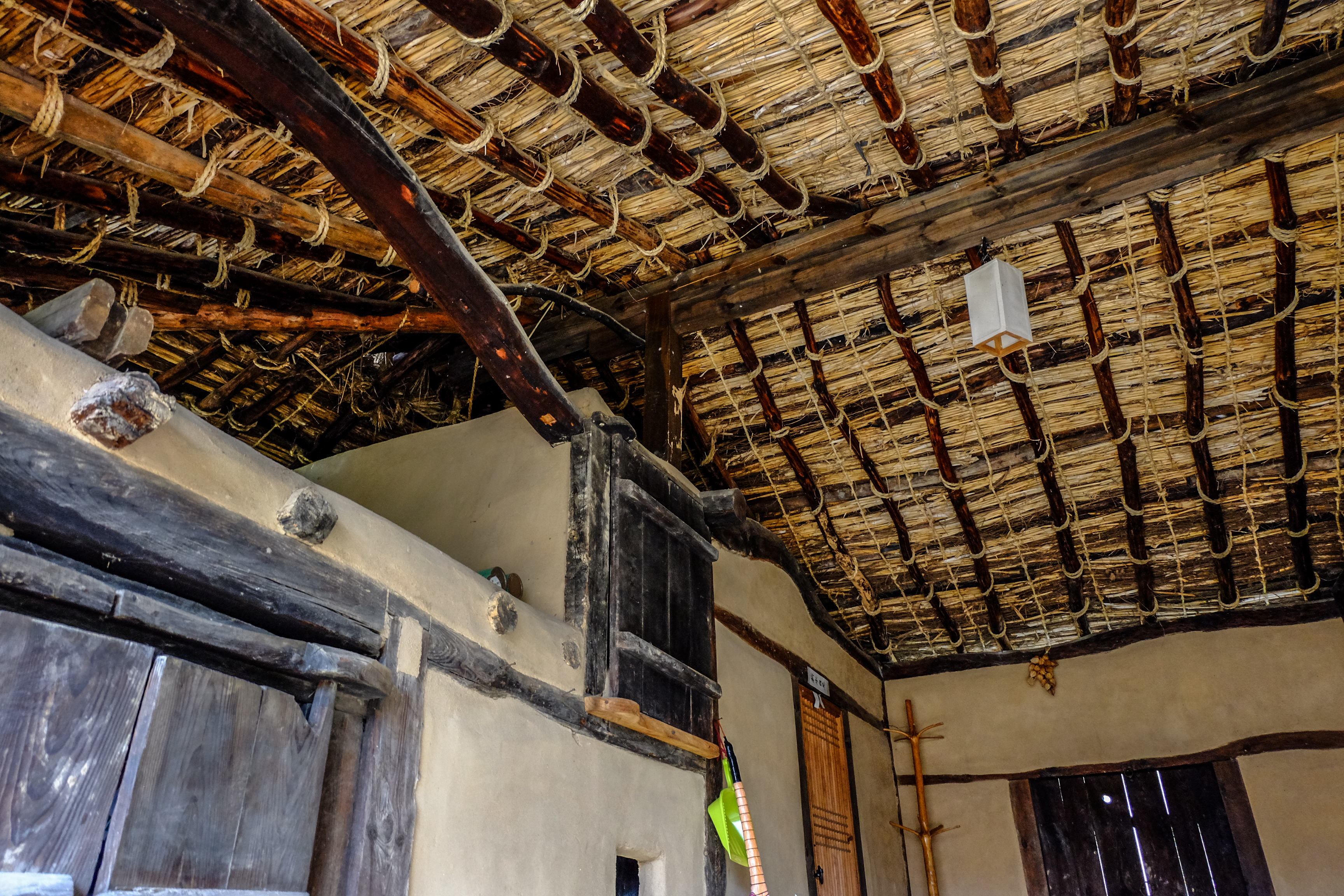
A peculiarity of traditional South Korean hoses is the Ondol, the raised floor heating system, which can be found both in sophisticated hanok and in lower class homes.
The stone basement of the house usually contains a network of small tunnels connected to a fire place. The heating system is achieved by channeling the hot air through these conduits in the floor (which work very well with traditional Korean floor mattresses).

EXPLORING HAHOE VILLAGE
Despite the bad weather we encountered, the visit to Hahoe village was simply enchanting and left us very pleased with the choice of making it all the way out there.
Upon arrival at Hahoe village Tourist Center during a typhoon, the first thing we looked for was shelter from the rain in the Mask Museum, which is located right next to the ticket office in front of one of the bus stations.
We found the museum quite interesting, not only to learn more about the Ritual Masks Dance (which originated in Hahoe and is one of South Korea’s biggest cultural prides), but also to admire a vast collection of masks from several Asian, Pacific, and African countries.
After the visit of the Museum, which took approximately 1h, we finally got to reach Hahoe village.


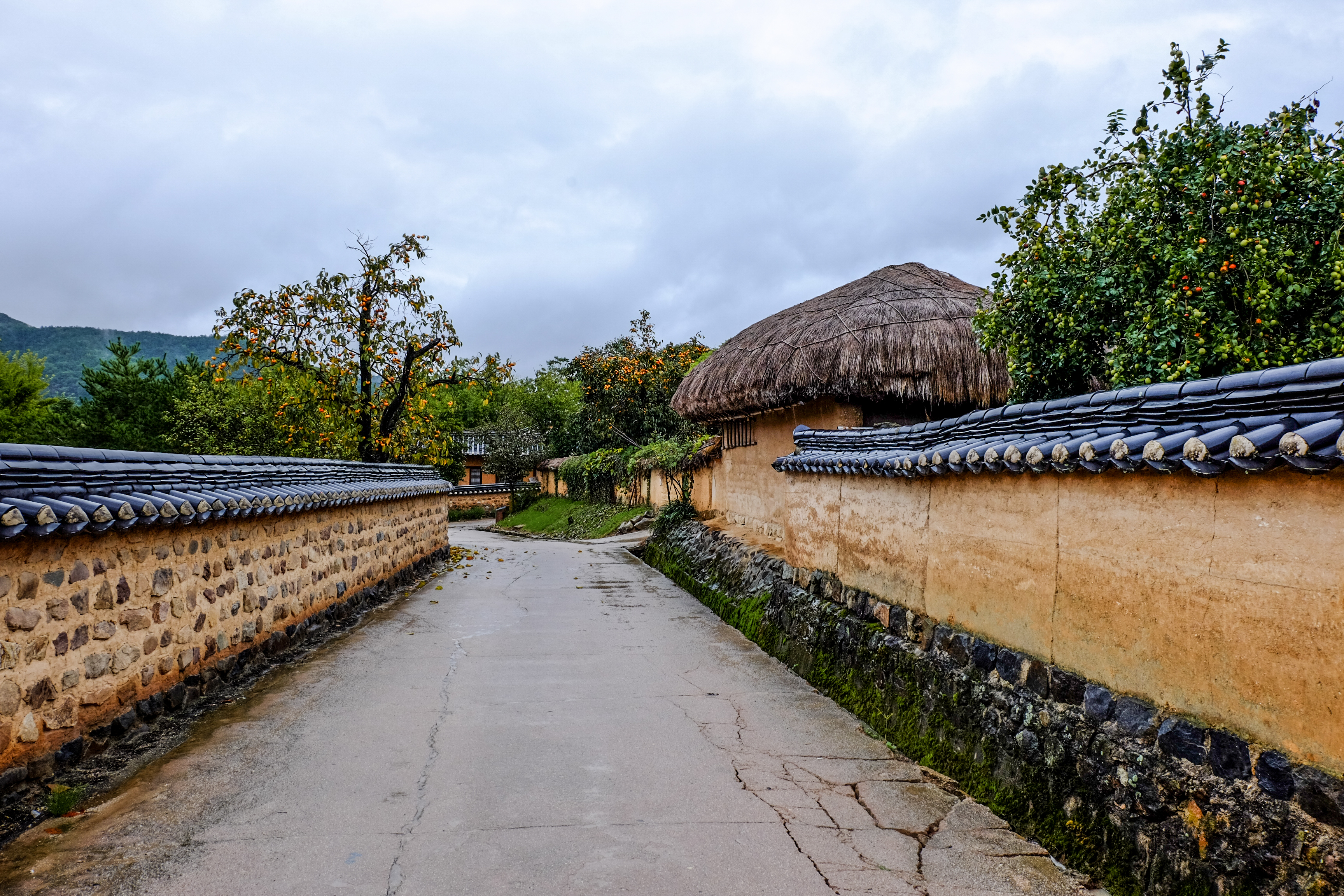
The village is sprawling, but not huge, and an extensive visit should take only a few hours.
We found Hahoe to be a truly beautiful place! The stunning setting boasted blooming fields and towering mountains, creating a nice contrast with the orange-ish color of the houses and walls. Short stone and rammed earth walls enclose the private houses, but it is still possible to take a glimpse inside the gardens and admire the beautiful roofs and folk tools hanging here and there.
Many of the houses are numbered and open to the public. Some of them however, are still home to local people, making Hahoe a living village, and it is important to respect their privacy.

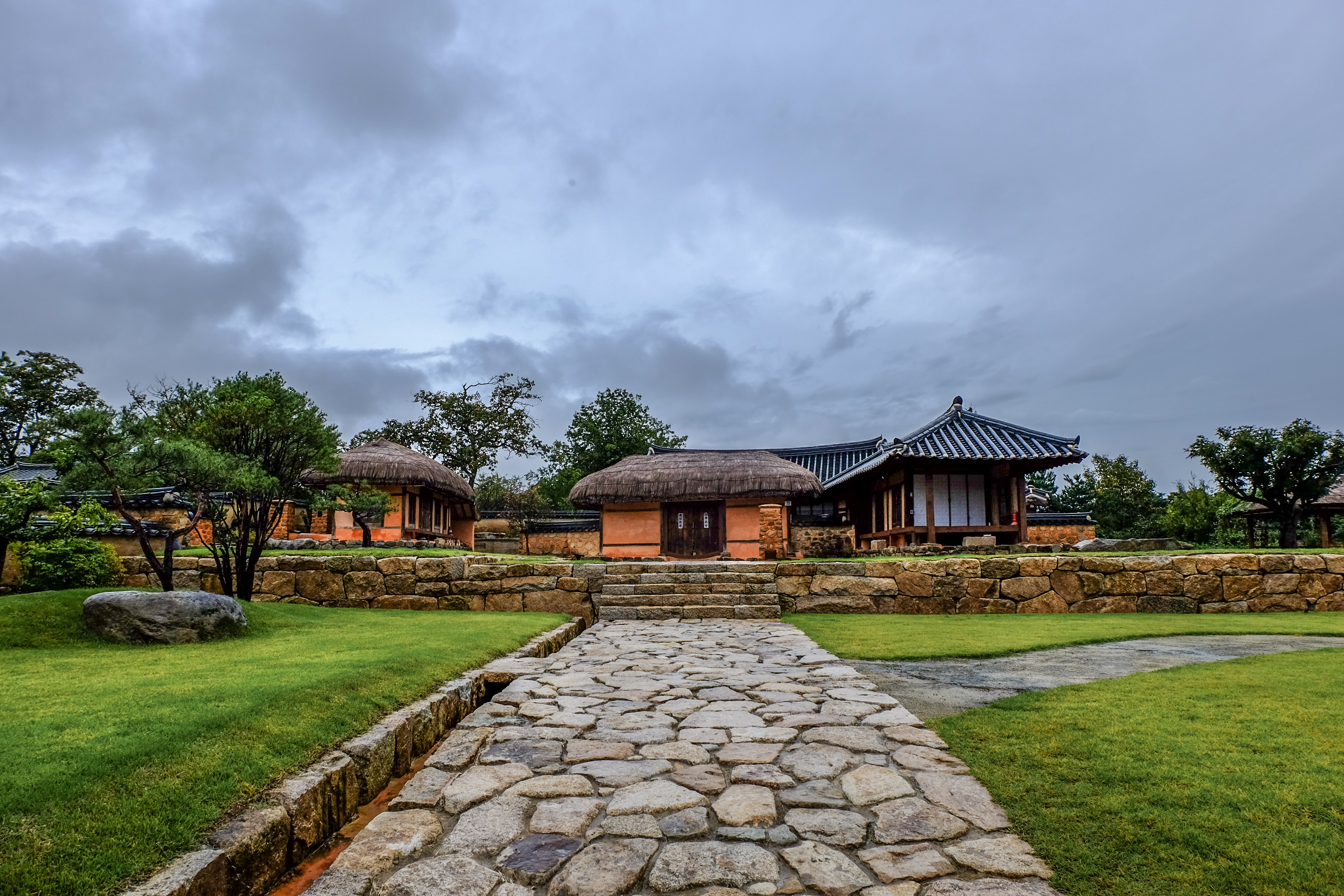
There are many beautiful hanok houses that were once the homes of the wealthier families, but many have been converted into a museum, and their courtyards are open to visitors.
What I personally found really special were the lower class homes with their thatched roofs and interesting structures, with details that can be observed and appreciated up close due to the small scale of the architecture.
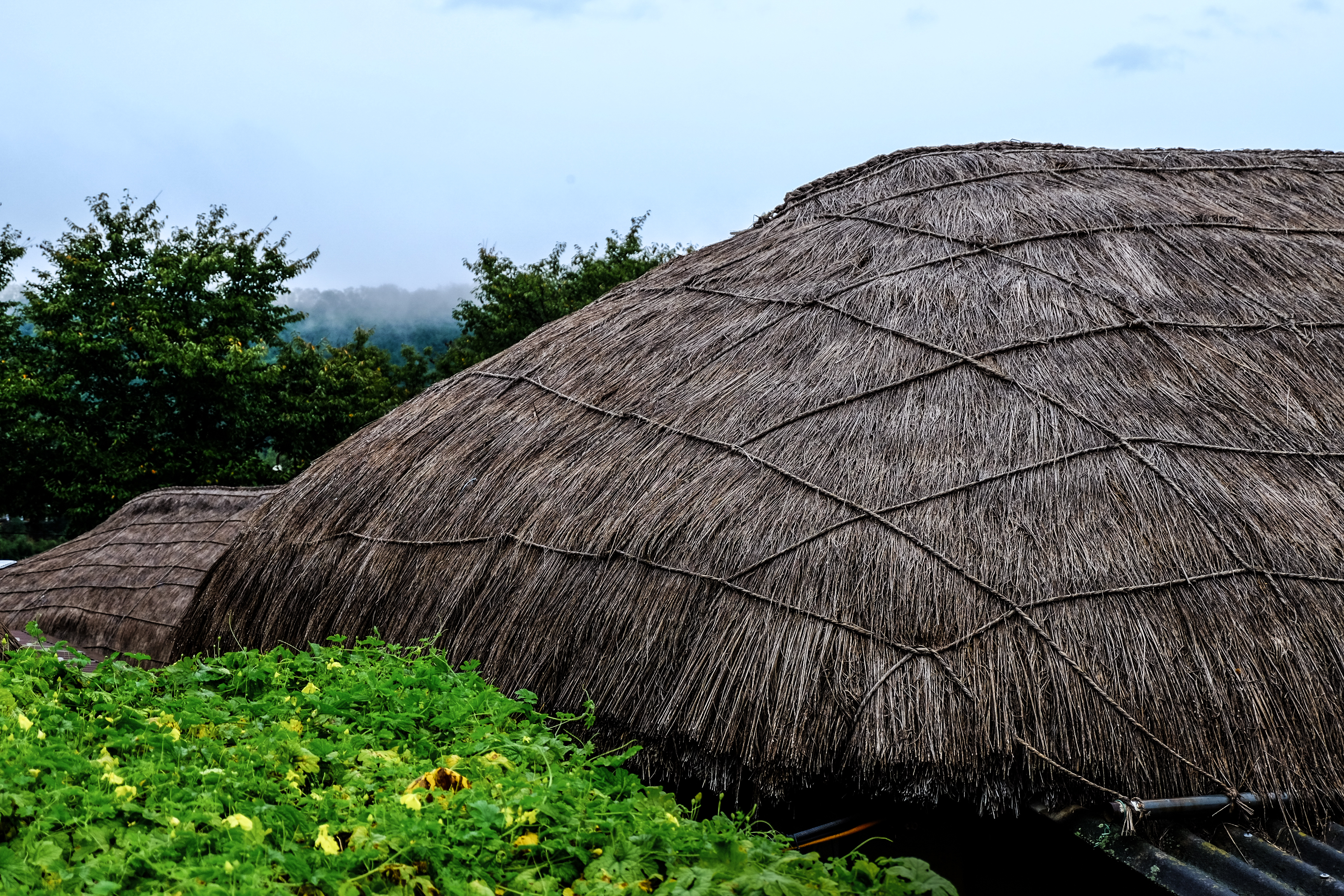
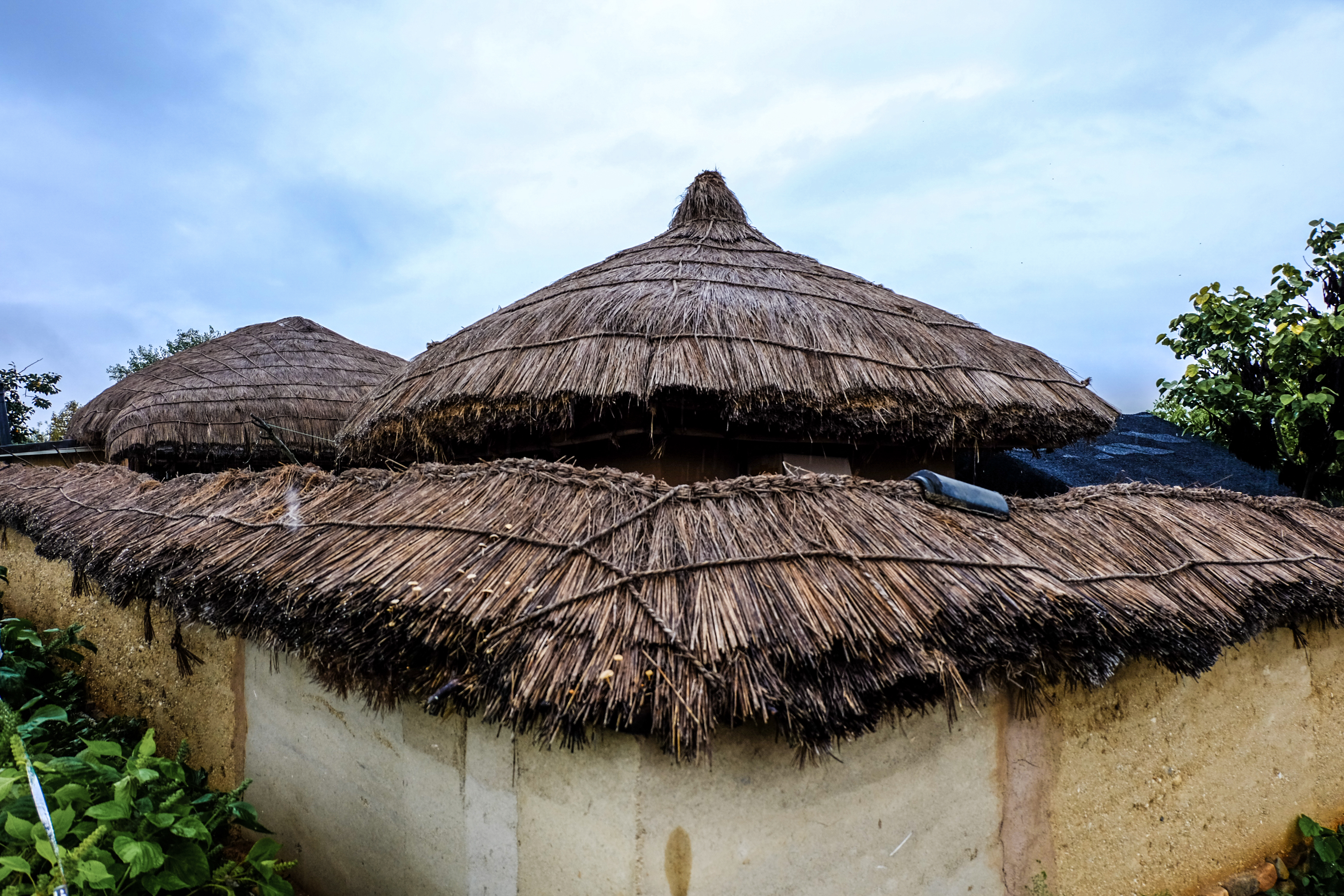
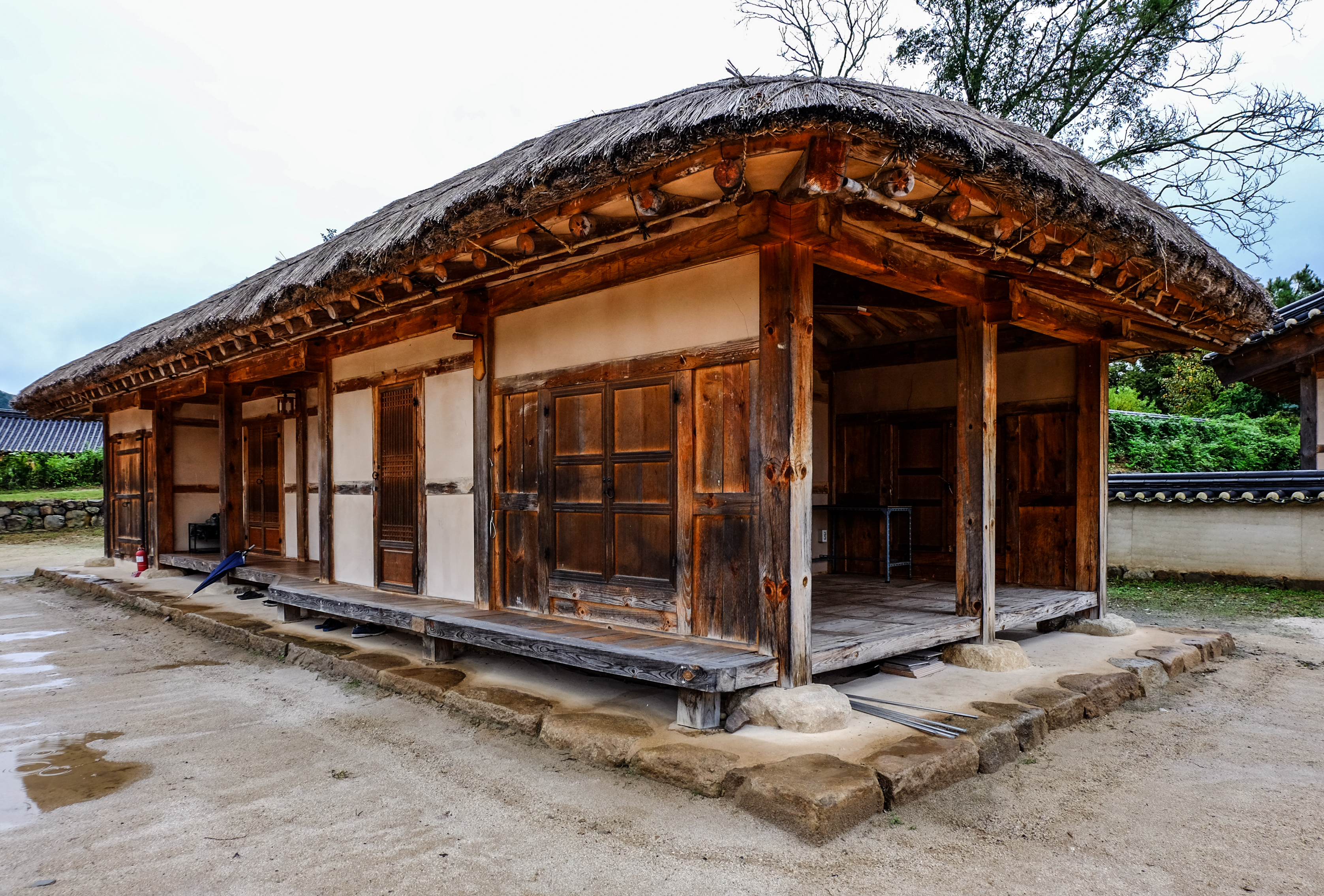
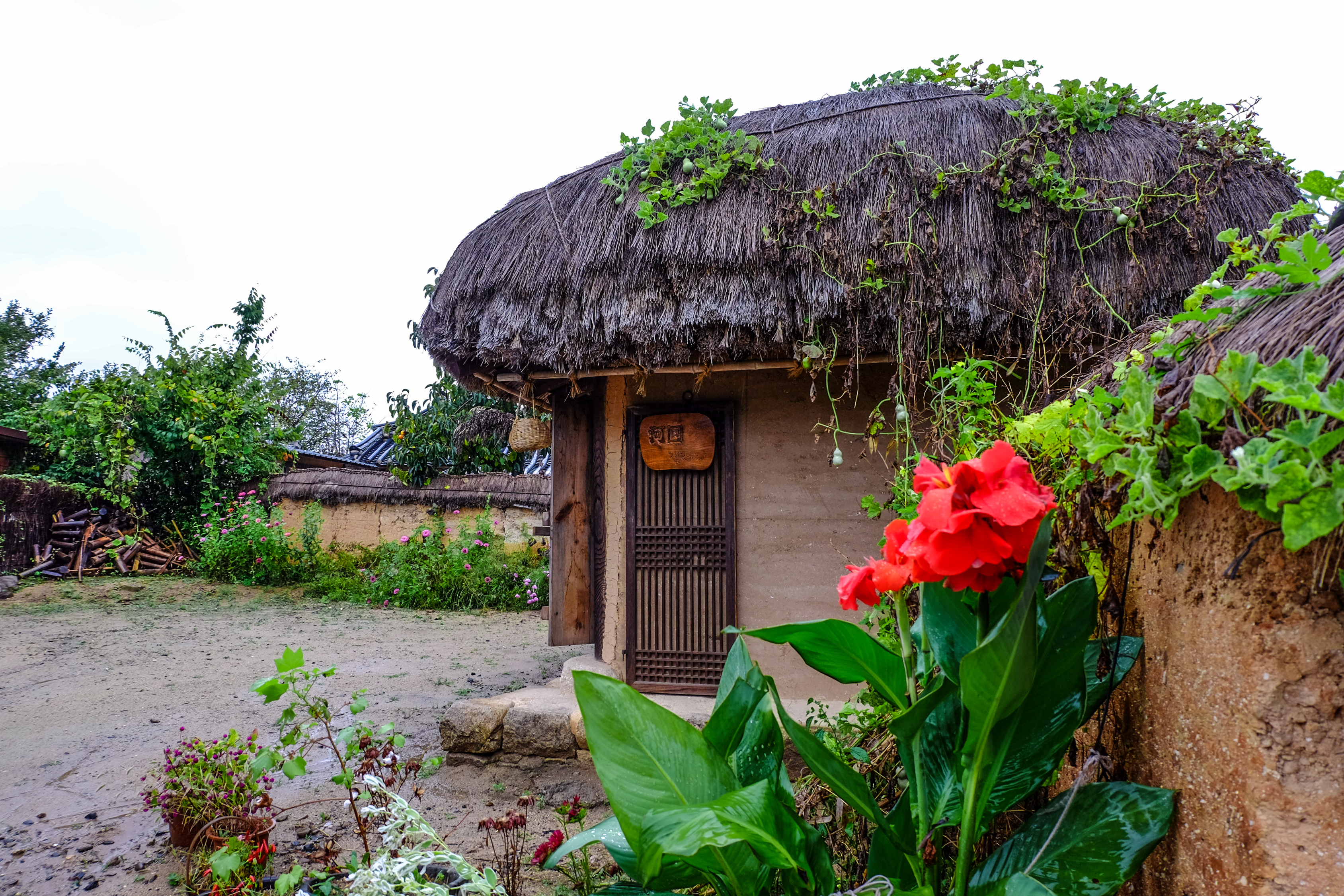


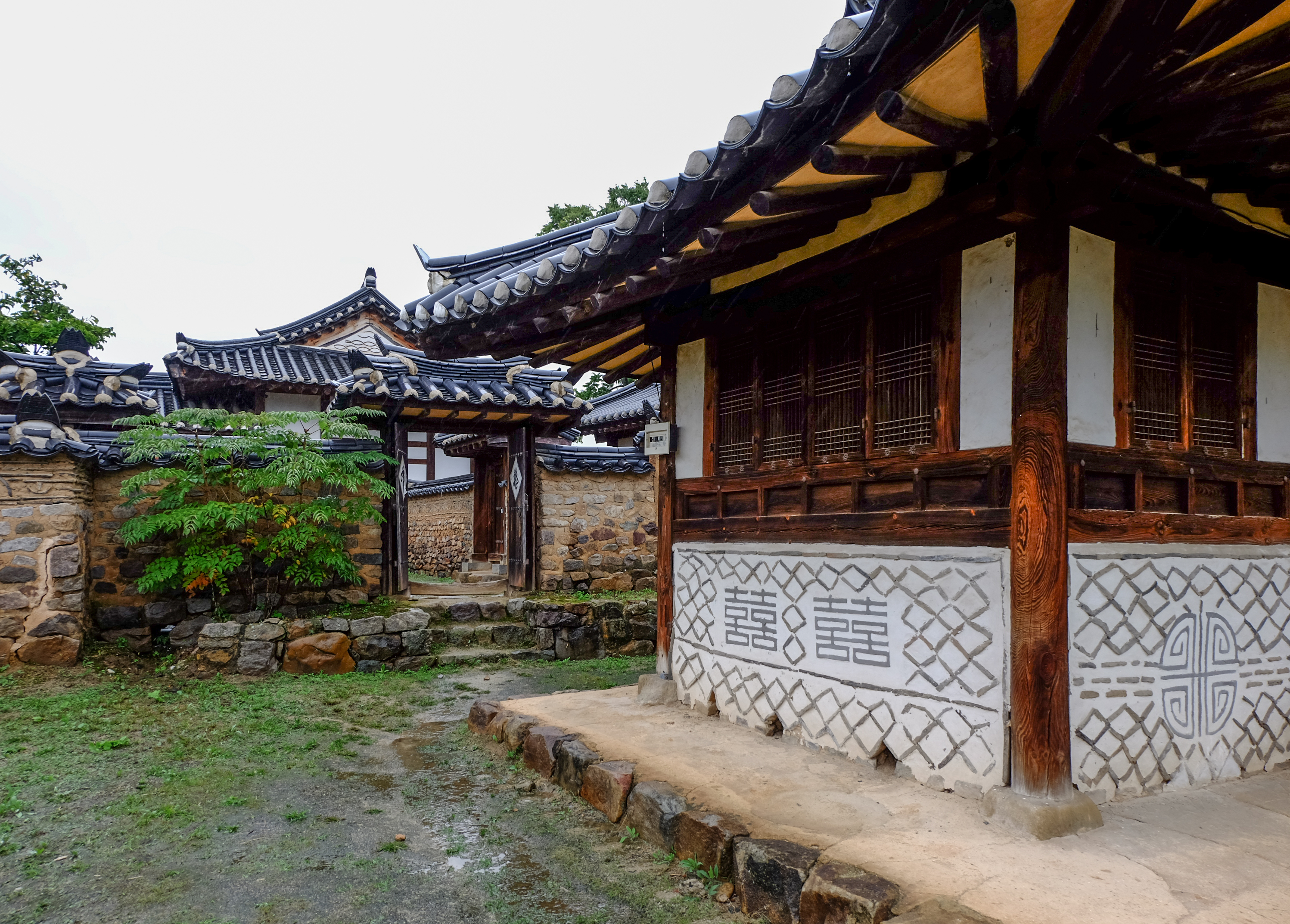
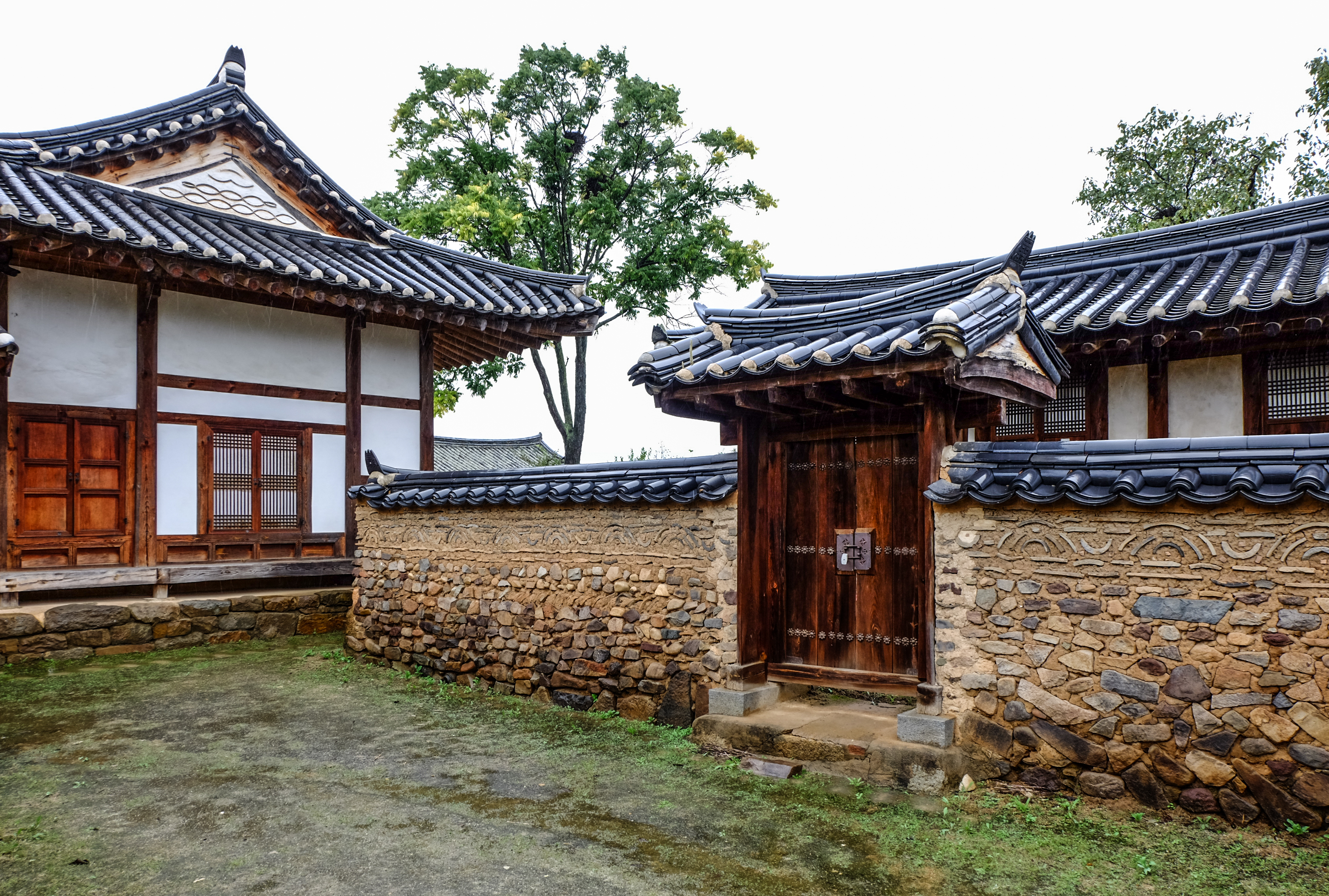
Wandering around at some point, we encountered a majestic 600 year old tree and some wells, until we reached the sandy beach on the river. Usually visitors can take a small boat to cross the river and climb the cliff opposite the village to enjoy the view from above. Unfortunately, due to the bad weather conditions on the afternoon we visited Hahoe, the boat was not running.
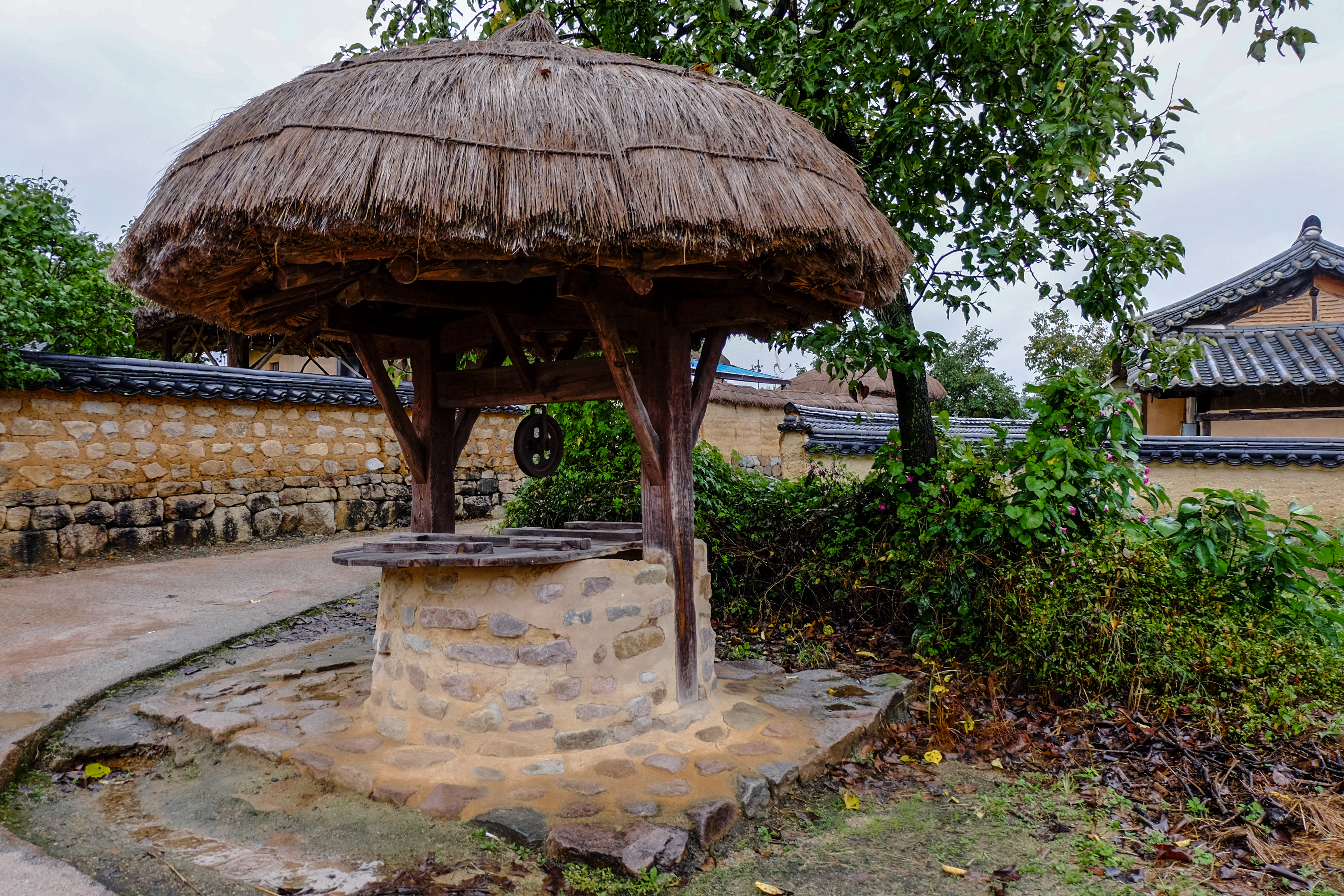

The village is extremely well kept and a big source of pride for the entire Nation, which defines Hahoe ‘the most Korean of the villages’. There are a few similar villages to Hahoe, but some of them are just modern reconstructions meant to be the set for some Korean dramas, while Hahoe is authentic and inhabited by the same family clan for over 600 years.
Of course some of the houses now have been modernized and adapted to modern living standards (I heard a tourist calling it fake because some homes have air conditioning… it is 2020 for everyone after all). The vernacular architecture though, is perfectly preserved, and the inhabitants still practice some of their special traditions since 15th century (just to mention one, the Ritual Mask Dance).
Because of its uniqueness, on April 1999 The Queen Elizabeth of England visited Hahoe village to celebrate her birthday. It’s possible to find the plaque in memory of the event close to where she planted a tree.
We spent approximately 3h walking around, but due to the extremely bad weather some of the buildings that usually are open to public were closed and the events of the week were cancelled. In fact, by coincidence we were in South Korea during that special autumn week of the year when the International Andong Mask Dance Festival is held (find out more here).
The festival usually presents an extensive lineup of mask performances from around the world with some of its events in Hahoe village. I was so excited about this and I was really looking forward to it!… Unfortunately there was a fierce typhoon that week, and I believe the day we were in Andong was the worst of it. The heavy rain did not give us any respite all day!
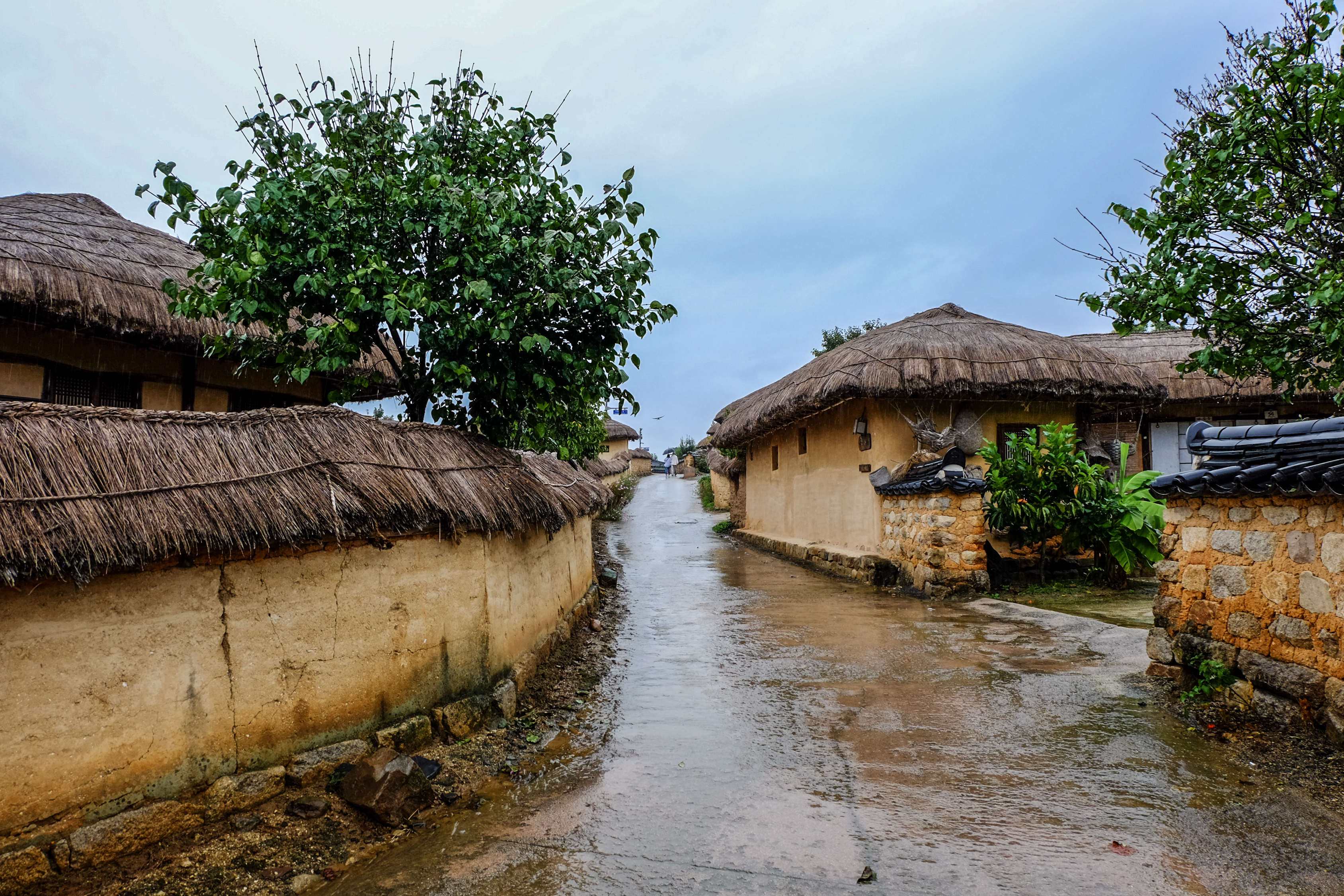
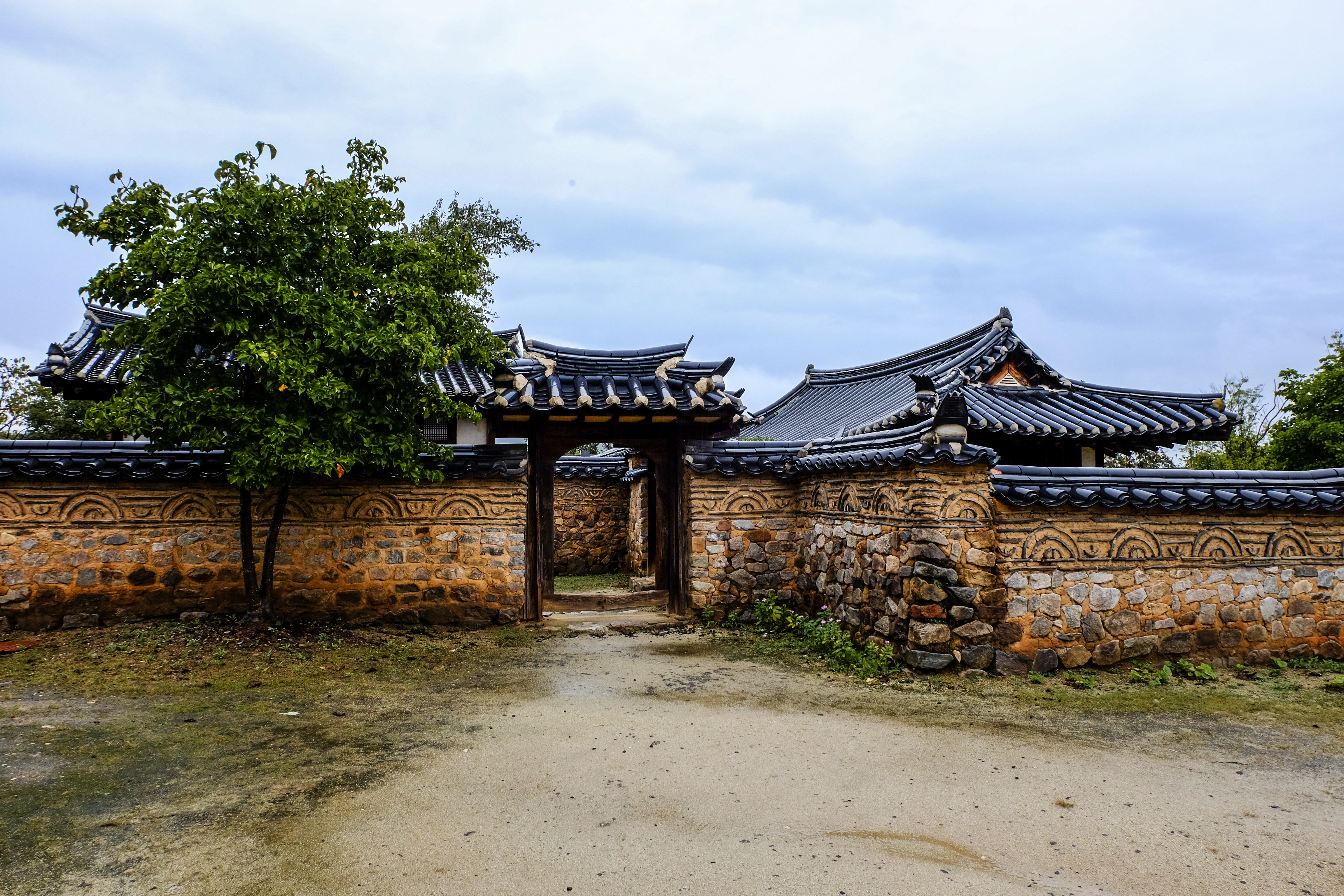
The typhoon didn’t stop us from exploring though, and even completely soaked, we agreed that Hahoe was one of the highlights of the entire 10 days we spent in the country (have a look here to know more about our itinerary).
We planned specifically to stop in Andong to visit Hahoe, and we left very happy with the experience we had. Even though we enjoyed it thoroughly, I can just imagine how much prettier the village would be with a nice weather!
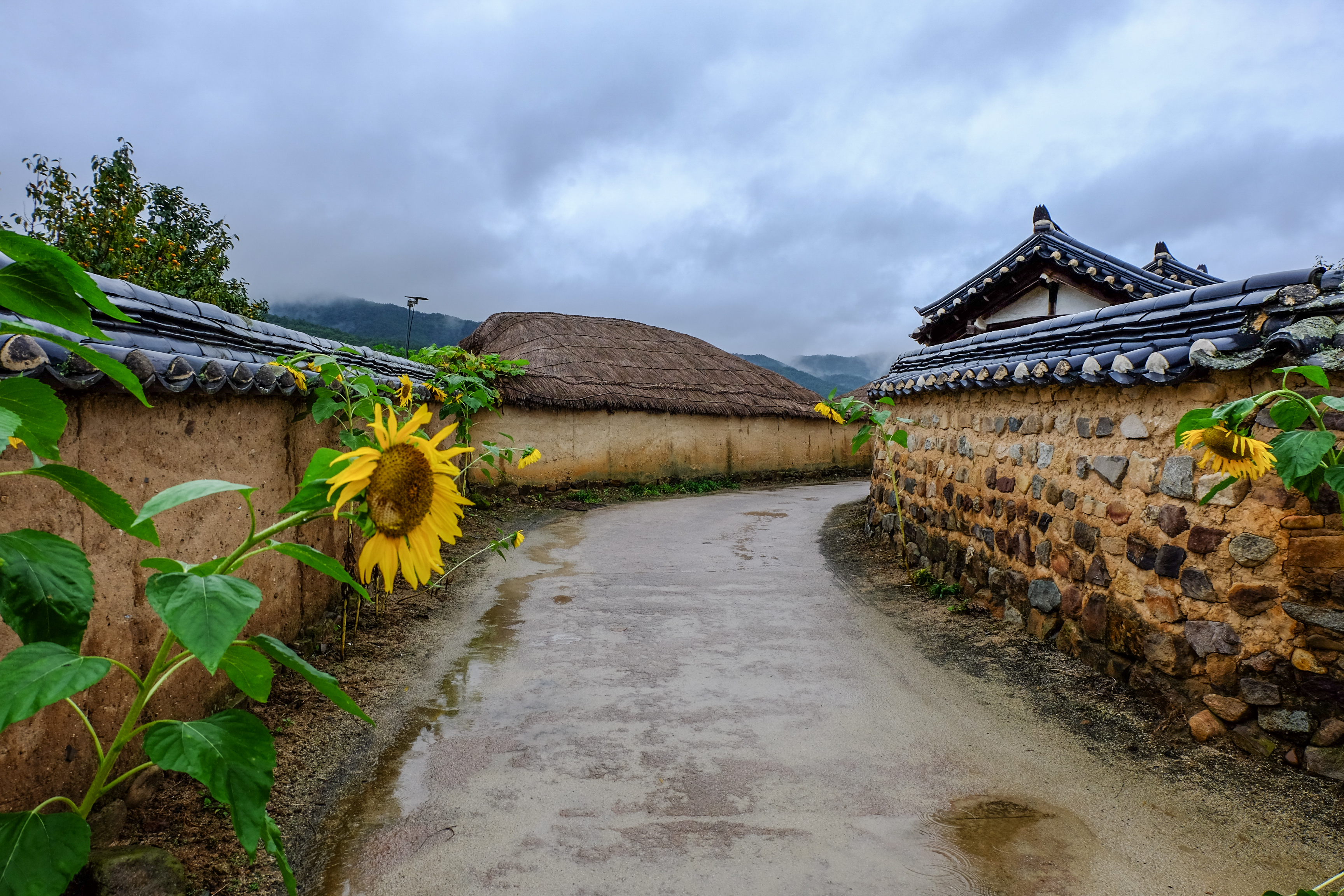
HOW TO GET TO HAHOE VILLAGE
To visit Hahoe travelers need do go to the city of Andong first, which is very well connected to the main cities of South Korea through express bus or train.
(public transport may need to be reserved in advance, especially during the International Andong Mask Dance Festival)
Hahoe village is located 24km west of Andong. It takes approximately 1h for a local bus ride from Andong downtown.
From Andong Railway Station (located in the city center), on the side of the road opposite to the station, it is possible catch the local bus 246, with the last stop being at Hahoe village.
The 246 bus makes a stop also at Andong Bus Terminal, where most of the city and intercity busses stop.
Once arrived in Hahoe, the entrance fee is 5,000 won, which also includes the entrance to the Mask Museum.
From the ticket office (which is also a tourist center and luggage storage) is possible to reach the village with a 15 minute walk, or taking a shuttle bus which is also included in the entrance ticket.

HAHOE RITUAL MASK DANCE
The Hahoe Mask Dance is a ritual kind of dance originated in Hahoe village more than 600 years ago.
The dance was performed by the villagers to praise the village’s God, hoping for peace, blessings, and good harvest.
Originally, it was a shamanic ritual for blessing the health of the village. Masks were considered a divine object, and therefore kept with the utmost care.
The dance was financially supported by the rich, but performed by the common people. The contents of the play usually involve critiques about the social contradictions and discriminations between classes. During the dance, the lower class were allowed to discuss the hardships of their life and mock the aristocrats, who were accepting of the satire and understanding of the commoners pains.
The Hahoe Mask Dance was a way for the villagers to resolve grievances and served to bind everybody together regardless of class.
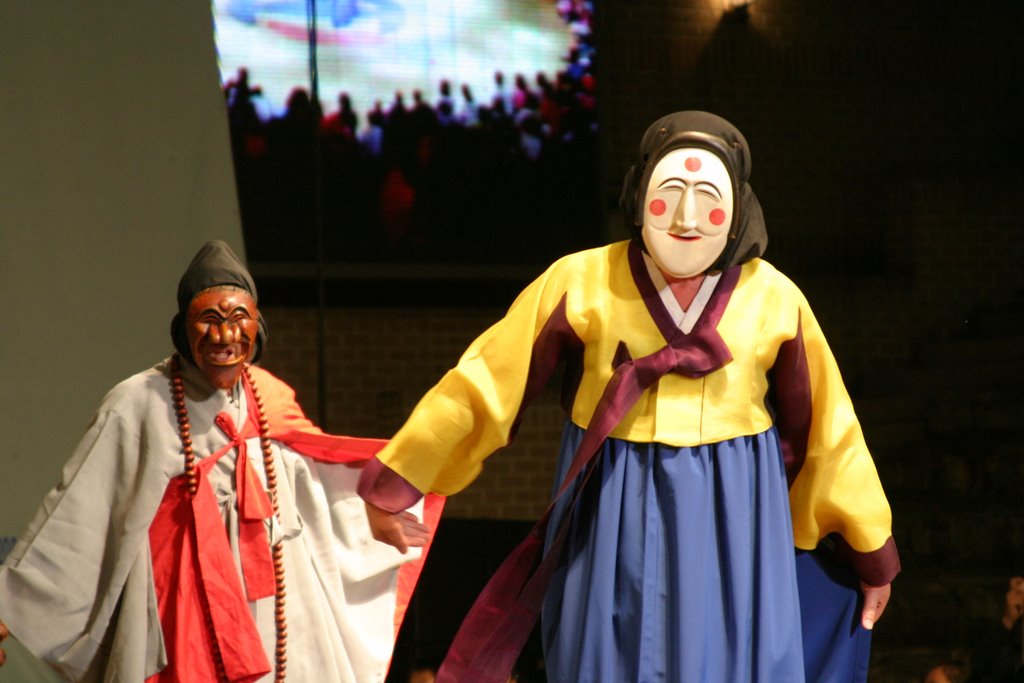
The Mask Dance has been performed in Hahoe village since its foundation. It was only discontinued in 1928 during the Japanese Colonial Period, where traditions were wiped out in order to weaken the Korean culture. After their independence, the Mask Dance was revived and carried out till today, even if it’s not a religious ritual anymore, but only a cultural heritage.
Because of its special characters and value among South Korean culture, today the Hahoe Masks have been designated as national treasures.
Every year, between September and October, the city of Andong, considered the cradle of Korean culture, hosts the International Andong Mask Dance Festival (find out more here), where mask performances from all over the World can be enjoyed, with a special attention paid for the Hahoe Mask Dance.
During this special occasion, many events and performances are held in Hahoe Village.
However, the village hosts in its arena small performances a few times a week according to the season.
(find out more on the official website of the village, click here)
Unfortunately during our visit, all the events were cancelled due to the bad weather (the stage is open air). How sad!!!!
IS TRAVELING TO HAHOE WORTH IT? MY OPINION
The afternoon we spent in Hahoe was one of the highlights of the 10 days we spent in South Korea. We made a specific stop along our route to visit this village, and couldn’t be happier with our decision.
I presume that, with better weather conditions, the visitors and the tourist activities would be much more plentiful. We had it mostly for us though, as together with us, there were only a handful of other people.
Unfortunately we couldn’t witness the Mask Dance Performance. That would have added even more point of interest to the visit
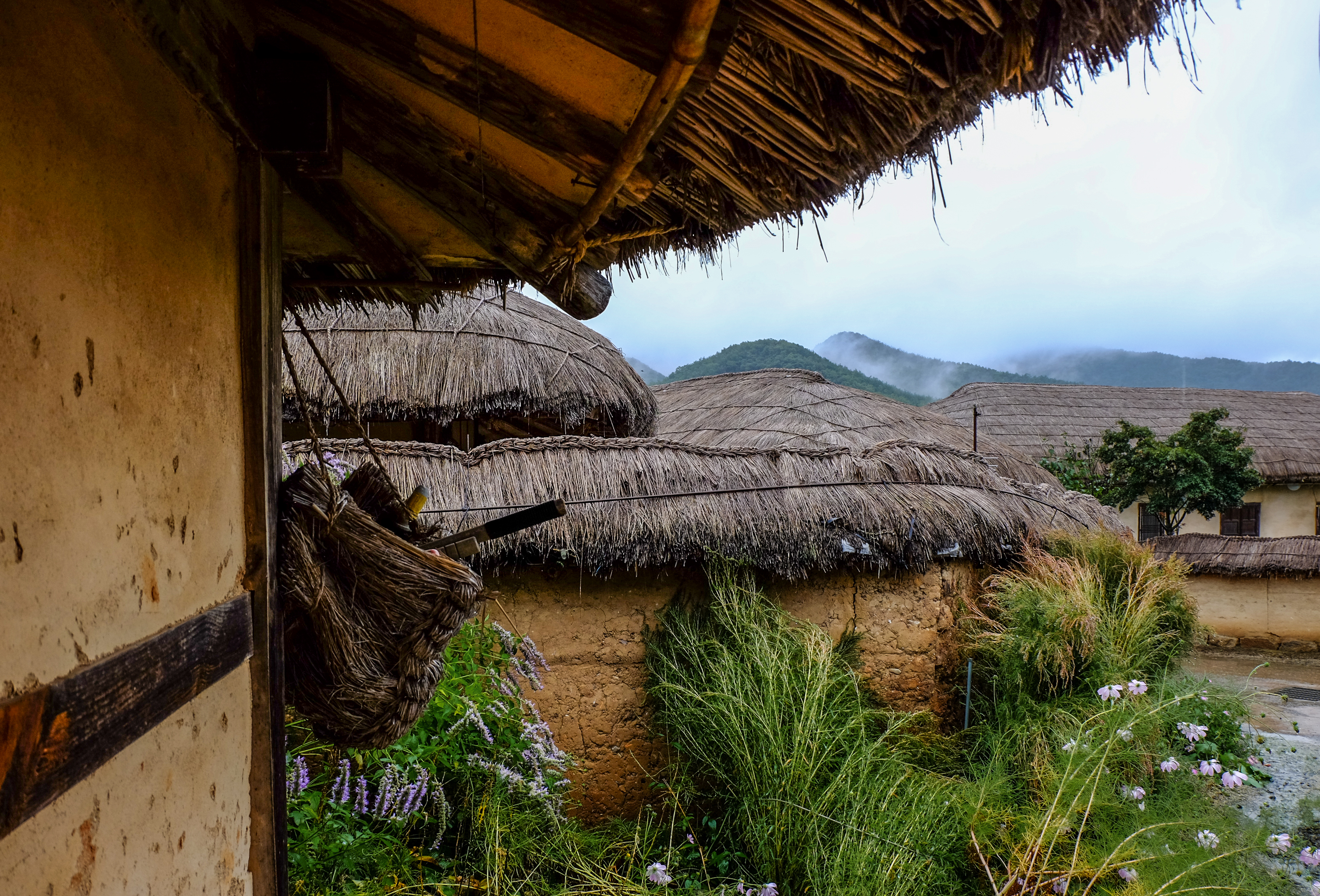
For traditional architecture geeks, I believe Hahoe is a really interesting destination to see while in South Korea. The combination of aristocrats houses, common folks houses, ancestral halls, and the cultural heritage is a great architectural lesson.
And the fact that the village is still inhabited and maintained with so much care makes it a really enjoyable and unique place to venture and experience the rural Korean countryside life of old!
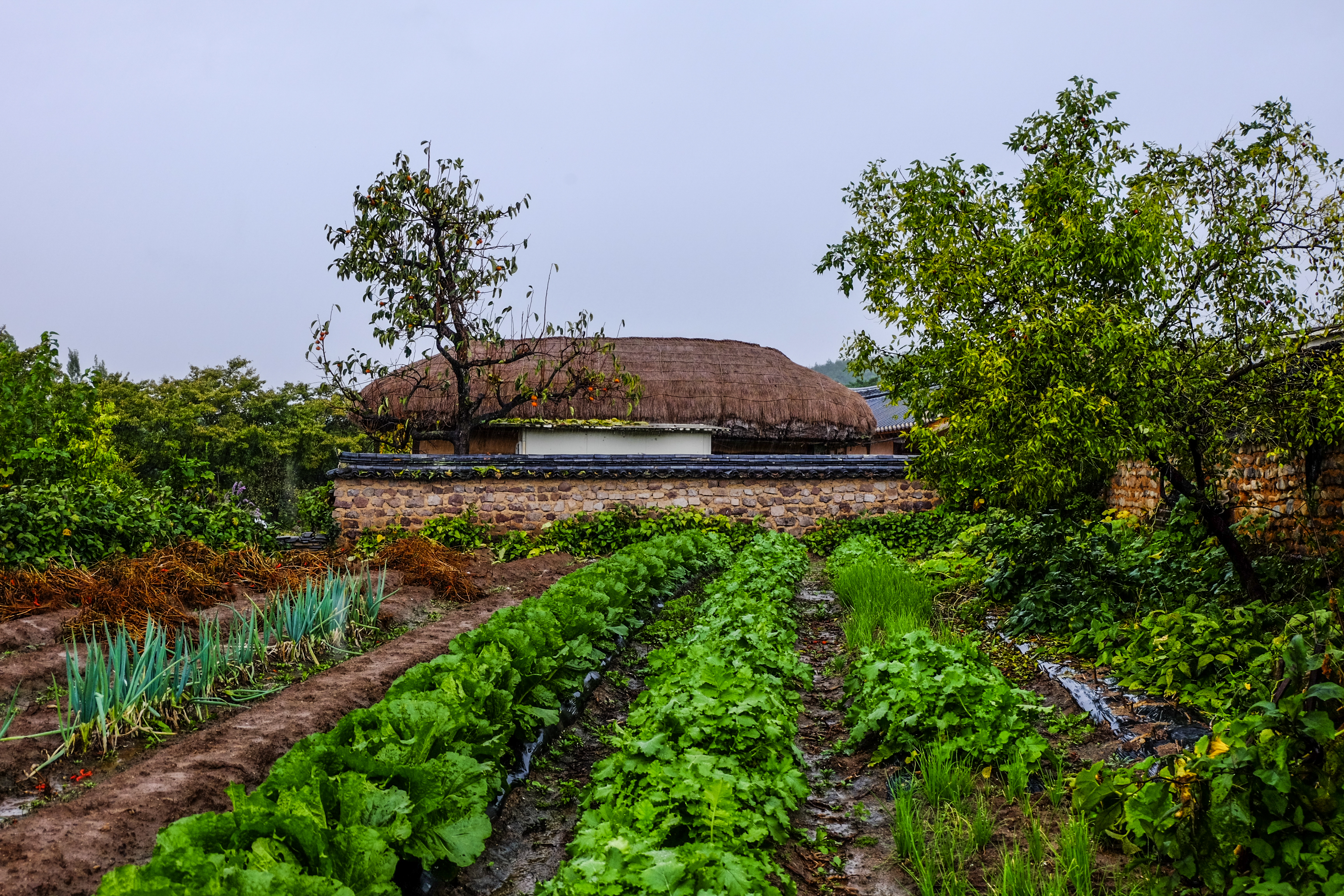
IF YOU FOUND THIS POST INTERESTING AND INSPIRING, HELP ME TO SHARE IT WITH OTHER TRAVELERS!

more from south korea
stay tuned !
search for a destination
latest travel itineraries
latest South Korea articles
Text and pictures by Architecture on the Road ©
Architecture on the Road
All rights reserved
All photographs on this site were taken and are owned by me (unless credited otherwise).
If you would like to use some of these photos for editorial or commercial purposes, many of these are available on Shutterstock (click the link below). Otherwise, please contact me on Instagram, Facebook, or by email.
Do not use my pictures without my written consent. Thank you!


Comments
We stayed in the small Hanok hotel in Hahoe village and we completely fell in love with the village and the surrounding countryside.
We are returning there in May 2023 and are much looking forward to it.
We were told on our last visit to Korea that one President had ordered the removal of all thatched roofs as they represented poverty and backwardness.
What a terrible shame – similar happened in Britain in towns and cities where decent buildings were pulled down and replaced with tower blocks that no one wants to live in.
Fortunately somehow Hahoe was spared this destructive diktat.